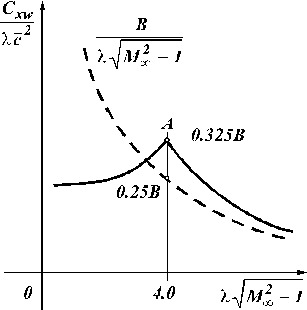
КАТЕГОРИИ:
Архитектура-(3434)Астрономия-(809)Биология-(7483)Биотехнологии-(1457)Военное дело-(14632)Высокие технологии-(1363)География-(913)Геология-(1438)Государство-(451)Демография-(1065)Дом-(47672)Журналистика и СМИ-(912)Изобретательство-(14524)Иностранные языки-(4268)Информатика-(17799)Искусство-(1338)История-(13644)Компьютеры-(11121)Косметика-(55)Кулинария-(373)Культура-(8427)Лингвистика-(374)Литература-(1642)Маркетинг-(23702)Математика-(16968)Машиностроение-(1700)Медицина-(12668)Менеджмент-(24684)Механика-(15423)Науковедение-(506)Образование-(11852)Охрана труда-(3308)Педагогика-(5571)Полиграфия-(1312)Политика-(7869)Право-(5454)Приборостроение-(1369)Программирование-(2801)Производство-(97182)Промышленность-(8706)Психология-(18388)Религия-(3217)Связь-(10668)Сельское хозяйство-(299)Социология-(6455)Спорт-(42831)Строительство-(4793)Торговля-(5050)Транспорт-(2929)Туризм-(1568)Физика-(3942)Философия-(17015)Финансы-(26596)Химия-(22929)Экология-(12095)Экономика-(9961)Электроника-(8441)Электротехника-(4623)Энергетика-(12629)Юриспруденция-(1492)Ядерная техника-(1748)
Triangular wing with supersonic leading edges
|
|
|
|
In case, when leading edges of a triangular wing are supersonic -  . The overflow is absent and the sucking force is not realized on the leading edge. It is possible to mark out two characteristic flow areas (Fig. 6.9). The wing areas I (shaded sites) outside of Mach cone are streamlined as the isolated slipping wing of infinite span, irrespective of other wing part. The pressure in these areas is constant and pressure factor is determined:
. The overflow is absent and the sucking force is not realized on the leading edge. It is possible to mark out two characteristic flow areas (Fig. 6.9). The wing areas I (shaded sites) outside of Mach cone are streamlined as the isolated slipping wing of infinite span, irrespective of other wing part. The pressure in these areas is constant and pressure factor is determined:
 , (6.15)
, (6.15)
where  - pressure factor on the airfoil;
- pressure factor on the airfoil;  or
or  - the leading edge characteristic.
- the leading edge characteristic.
 Fig. 6.9. Triangular wing with supersonic edges
Fig. 6.9. Triangular wing with supersonic edges
|
There is an influence of the angular point (wing top) in the wing central part falling into Mach cone. Conical flow takes place in this area II, for which the constancy of pressure on each ray outgoing from wing top is characteristic, but pressure on different rays is various. The pressure factor for such case is determined as
 , (6.16)
, (6.16)
where  ,
,  .
.
The integration of pressure distribution results in the following formulas for the aerodynamic characteristics:
 ,
,  ,
,  ,
,
 , (6.17)
, (6.17)
 , (6.18)
, (6.18)
 , (6.19)
, (6.19)
 . (6.20)
. (6.20)
It is noteworthy, that the value of  for triangular wing with supersonic leading edges coincides to the airfoil characteristic
for triangular wing with supersonic leading edges coincides to the airfoil characteristic  (difference is in pressure distribution). The pressure rising at tip sites compensates pressure decreasing in central area of the triangular wing. It can be shown, that the share of tip sites in total lift comes to
(difference is in pressure distribution). The pressure rising at tip sites compensates pressure decreasing in central area of the triangular wing. It can be shown, that the share of tip sites in total lift comes to  , that at
, that at  corresponds to
corresponds to  and at
and at  -
-  .
.
Just as for a wing with subsonic edges, the ratios  and
and  also are functions of
also are functions of  and airfoil shape for wave drag (Fig. 6.10, 6.11). It is necessary to note, that the formulas for a triangular wing with subsonic and supersonic edges are theoretically joint to a fracture at
and airfoil shape for wave drag (Fig. 6.10, 6.11). It is necessary to note, that the formulas for a triangular wing with subsonic and supersonic edges are theoretically joint to a fracture at  or
or  .
.
Experimentally this fracture is smoothed out. In point  the leading edge passes from a subsonic flow mode to supersonic flow. The application of wings with subsonic edges is evident on a curve of wave drag (in this case induced drag decreases too due to realization of sucking force). The most adverse flow mode - in zone of
the leading edge passes from a subsonic flow mode to supersonic flow. The application of wings with subsonic edges is evident on a curve of wave drag (in this case induced drag decreases too due to realization of sucking force). The most adverse flow mode - in zone of  numbers corresponded to a sound leading edge.
numbers corresponded to a sound leading edge.


Fig. 6.10. Dependence of  on reduced aspect ratio on reduced aspect ratio 
| Fig. 6.11. Dependence of  on reduced aspect ratio on reduced aspect ratio 
|
 Fig. 6.12.
Fig. 6.12.
|
It is interesting to note, that if triangular wing is put into flow by the reverse side (Fig. 6.12), then pressure distribution along the inverted wing will be the same as for a wing of infinite aspect ratio, i.e.  . In this case lift coefficient
. In this case lift coefficient  and induced drag
and induced drag  will be the same, as on the initial triangular wing. It is a particular case of the general theorem of reversibility. According to this theorem, the lift of a flat wing of any plan form at the direct and inverted flow will be identical, if the angles of attack and speeds of undisturbed flow will be identical. For induced drag the equality will be obeyed at supersonic leading edges (in direct and inverted flows) or at identical values of sucking forces.
will be the same, as on the initial triangular wing. It is a particular case of the general theorem of reversibility. According to this theorem, the lift of a flat wing of any plan form at the direct and inverted flow will be identical, if the angles of attack and speeds of undisturbed flow will be identical. For induced drag the equality will be obeyed at supersonic leading edges (in direct and inverted flows) or at identical values of sucking forces.
Considering the load distribution along wing surface it is possible to make the conclusion that the cut-out of trailing edge (form such as “swallow's tail”) (Fig. 6.13,1) should result to increasing of  , and additive of the area to a trailing edge
, and additive of the area to a trailing edge
(Fig. 6.13,3) - to decreasing of  . It is possible to write down
. It is possible to write down  .
.

Fig. 6.13. Various versions of trailing edge shape
At  the wings aerodynamic characteristic are determined by the characteristics of the initial triangular wing by multiplication to a factor dependent on the ratio of sweep angles on forward and trailing edges
the wings aerodynamic characteristic are determined by the characteristics of the initial triangular wing by multiplication to a factor dependent on the ratio of sweep angles on forward and trailing edges  , where
, where  . It is necessary to take the sweep angle on the trailing edge with its own sign. So derivative of a lift coefficient
. It is necessary to take the sweep angle on the trailing edge with its own sign. So derivative of a lift coefficient  , wave drag and location of aerodynamic center are defined by the formulae
, wave drag and location of aerodynamic center are defined by the formulae
 ;
;  ;
;  . (6.21)
. (6.21)
6.4. Wings of any plan form.
The qualitative analysis of the aerodynamic characteristics.
The main feature of the aerodynamic characteristics of all wings: with increasing of Mach numbers  (more precisely - reduced aspect ratio
(more precisely - reduced aspect ratio  ) the aerodynamic characteristics
) the aerodynamic characteristics  ,
,  tend to the airfoil characteristics, i.e.
tend to the airfoil characteristics, i.e.  ;
;  . It can be explained, that the Mach cone is narrowing with increasing of
. It can be explained, that the Mach cone is narrowing with increasing of  (at
(at  ) and each cross-section of a wing also will be isolated streamlined. It also follows, that the wing aerodynamic center (or center of pressure) displaces into center of mass of the plan form, i.e.
) and each cross-section of a wing also will be isolated streamlined. It also follows, that the wing aerodynamic center (or center of pressure) displaces into center of mass of the plan form, i.e.  .
.
Let's analyze the aerodynamic characteristics of wings.
|
|
|
|
|
Дата добавления: 2014-12-16; Просмотров: 430; Нарушение авторских прав?; Мы поможем в написании вашей работы!